Corsair Hydro Series: H60, H80 and H100 Reviewed
by Jared Bell on November 7, 2011 12:00 AM EST- Posted in
- Cases/Cooling/PSUs
- Corsair
- Water Cooling
Cooler Installation
Mounting the H60 and H80 radiators is similar except the H80 provides a minor challenge due to its thicker size and having a second fan to install. After all is said and done, it doesn’t pose any real problems. Just make sure to take your time and don't over tighten the screws or you may end up bending the fins on the radiator. Most cases should support either the H60 or the H80 without too much trouble, assuming the case has a mounting point for a 120mm fan. I didn't have any filament problems, and thanks to the low profile of the CPU block, I don't see any issues with the second fan hanging slightly over the CPU block if needed.
The H100's 2x120mm radiator design and 275mm overall length may pose problems depending on your choice of case. You're going to need ~52mm of clearance to install the H100 in its default configuration and a whopping ~77mm if you opt for a push/pull setup. This is of course assuming you have a case that supports 2x120mm fans with the correct 15mm spacing for the radiator/fans.
I even had trouble installing it in Corsair's own Graphite 600T case. Everything fit properly, but I had to install the radiator inside the case and then install the 2x120mm fans inside the lid where the removable panel is. This may not seem like a problem because the 600T was essentially designed this way; however, the top cover is so restrictive it caused temperatures and noise levels to rise. For testing purposes, I had to leave the top cover off in order not to skew the results. Corsair's new Carbide Series 400R/500R looks to be H100-ready, allowing you to install the radiator on top with the fans inside the case. I can't speak from experience with any other cases for the H100, but if your case meets the clearance and spacing requirements, you shouldn't have any issues.
The installation procedure for the water block is the same for each unit we tested. I think it's a welcomed design improvement over the H50 and H70. Since the water block comes preinstalled with the Intel mounting brackets, AMD users will have to remove them and install the included mounting brackets for AMD CPUs. Also, AMD users do not have to worry about installing a backplate because these kits make use of the backplate already installed on your motherboard. The backplate for Intel CPUs has adjustable mounting holes that slide to easily fit any of the supported CPU sockets.
After securing the backplate with the double sided screw mounting posts, securing the water block is as easy as tightening four thumb screws. Previously with the H70, I had issues lining up the water block properly which led to multiple mounting attempts before good contact was made. With the H60, H80, or H100 blocks, I was able to make good contact on the first try. This was later verified with multiple mounts as described in the testing procedures. Just make sure to take your time and tighten the thumb screws in order as recommended in the manual.


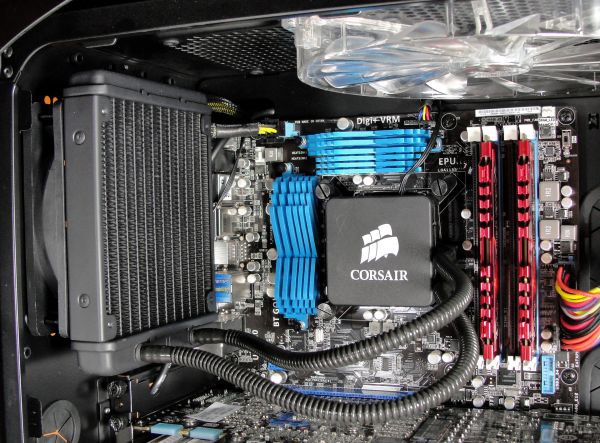
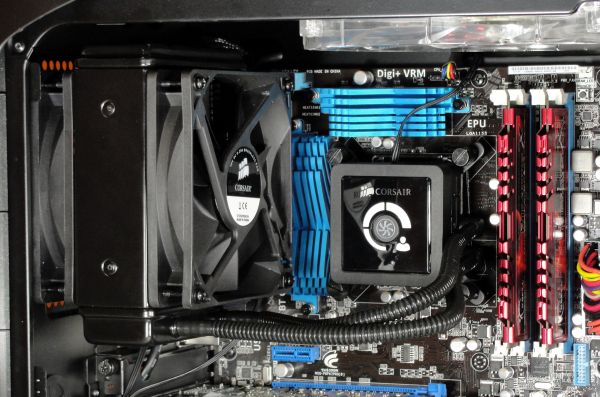
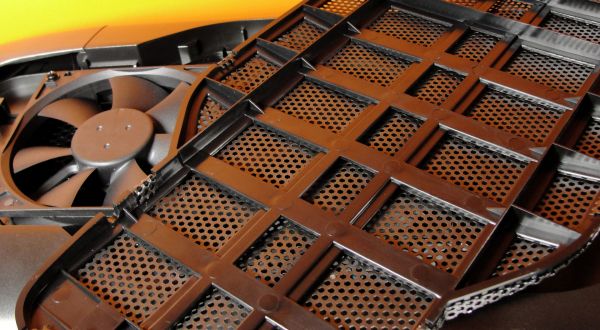
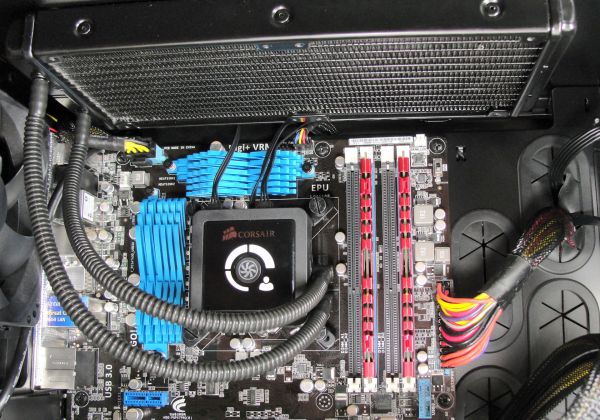

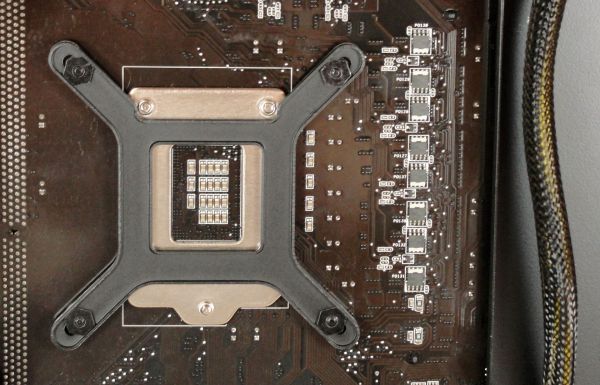








91 Comments
View All Comments
n13L5 - Monday, August 27, 2012 - link
ooops necro alert....JPForums - Monday, November 7, 2011 - link
<quote>(English is my 2nd language so I'm not sure I use all words 100% correctly. Hope I'm understandable.) </quote>Quite.
Also, you seem to have a good understanding of how liquid cooling systems work, and for all practical purposes I agree with you statements.
However, in regards to the function of reservoirs, there are a few technicalities that could dispute your statements in theory, but not in common practice.
First, if the reservoir is made of a thermally conductive material and has good thermal contact with the chassis in which it is mounted, it can remove heat conductively. Commonly, reservoirs are made of plastic and thus provide no effective cooling. As you alluded to earlier, you would need a massive surface area of liquid to radiate an appreciable amount of heat. Further, as most of this heat is lost as liquid turns to vapor (Read: liquid loss), it would not be in your best interest to rely on such a system.
Second, larger volumes of liquid would take longer to heat. If you were to take measurements of two similar systems with varying volumes of liquid, you would find that the system with less liquid would reach steady state temperatures more quickly. If you compared temperatures without making sure the second system reached steady state, then you might indeed conclude that the extra volume of liquid was beneficial to cooling. However, upon reaching steady state, both systems would perform more or less the same.
Again, in practice the reservoir does little to add to the cooling capability of the system.
Death666Angel - Monday, November 7, 2011 - link
Good addition to my post and of course, very true. :-)martyrant - Monday, November 7, 2011 - link
I just have a $30 enzotech cpu block, $5 casa depot homer bucket, $15 eco 264 pump (using 1/2" tubing), and let me tell you, compared to every other "pc built water cooling system" whether I pieced it together of expensive parts off frozencpu or bought a kit, this is by far the best cooling setup I've ever ran. No radiator. Just a 5 gallon bucket of distilled water. If you are worried about algae or other goodies, just run h2o2 (hydrogen peroxide) with it [don't use the medical stuff, grab the stuff that is like 30% h2o2]. Sometimes I can't believe how much I used to spend on this crap. Sure, it's not that portable [but who moves their water cooled computer anyway--you are supposed to drain/fill everytime you do with the other custom kits], and it either loses/gains wow factor depending on how you look at it (I love showing off my ghetto cooling setup that beats the pants off everything beyond going chilled water). The only upgrade would be a car radiator...hah.double0seven - Tuesday, November 8, 2011 - link
It sounds like it is working for you this way, but have you ever wondered why your windows keep fogging up? And the underside of your desk is moldy?martyrant - Sunday, November 13, 2011 - link
It's got a lid, I cut out holes, it's semi-sealed...and even if it wasn't, those wouldn't be an issue...do you know what you are talking about?jewie27 - Sunday, November 20, 2011 - link
they use a 240MM radiator because they are only meant to cool the CPU not the entire system with GPU's...Wakanabi - Monday, February 13, 2012 - link
I just overclocked a new FX4100 cpu from 3.6 to 4.6Ghz per core, quad core, in a NZXT M59 case and using a corsair H60 $60 liquid solution I ran prime95 overnight. Completely stable and better yet the cpu never eclipsed 38 degrees celcius. On top of that it has been idling at 8-15celcius. Compare that to stock or even aftermarket fans.Even the cheap H60 does an amazing job at cooling. Naysayers simply haven't tried them. The H100 in my HAF case is even more amazing with my core i7 cpu.
ashujmc - Monday, August 25, 2014 - link
You make a water cooler with a Radiator surface area equivalent to that of those Huge air coolers, you will get better performance.. additionally, not to forget that Air coolers, However massive, release all their heat Inside the CPU cabinet itself.. so HEATING THE OTHER COMPONENTS.... so heat washout from the cabinet will depend on Air flow through cabinet.. and to make the matter worse, they Obstruct Air flow inside the cabinet due to their Huge size... but Water cooler radiators will release the heat outside the cabinet.. so less heat trapped inside.. and due to smaller nature of main unit, won't block the air flow much.. if at all...zodiacfml - Tuesday, November 8, 2011 - link
surface area. that is why these sealed water cooling kits perform better with faster fan speeds. yet, they still make sense when you have a moderate target cooling capacity like cooling a Sandy Bridge.